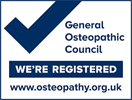Core Stablity - Its the centre of us

I find we get a bit intimidated about core stability as it’s been made a bit mythical but really it’s very simple. It refers to engaging our deep stabilising muscles which help us balance our core against gravity. In other words, the deep stabilising muscles hold us steady whilst our superficial mobilising muscles move us.
If we can engage our core and lower our centre gravity with good posture, we are much more stable and balanced, more coordinated and hopefully we are less likely to strain and hurt ourselves.
Part of core stability is actually a state of mind. You need to engage and switch your body on, including your deep stabilising muscles, whilst we maintain an upright position, like sitting or standing, and particularly before we try to move. One way to do that is to focus and prepare your balance, take a deep breath to lift our energy and relax the mind/ be present in the moment, then reengage your body before moving. This is borne out by watching a high-level sports or a marshal art person. They mentally prepare so they are fully engaged in mind, body and spirits before performing. Otherwise we move in an uncoordinated and disorganised fashion when you are most likely to hurt yourself.
So, my basic formula for engaging your core stability before moving is to;
Find good basic posture + Mentally engage/ talk to your body + Take deep abdominal breaths = Core stability.
Feel free to test it out and give me your feedback, please.
Whether sitting, standing or moving we want to be as stable as possible, then we need to have a defined core.
If we think about the first year of our life. We spent most the time trying to stabilise, strengthen and control our bodies so we can move without losing our balance. The next few years is spent challenging and perfecting that balance and stability. Unfortunately, life then changes and we often get less active and more sedentary and wonder why we hurt ourselves more often. Yes it is partially that our tissues age but its not the only reason. So be more like a child, be more physically active and challenge your balance in a sensible way, in other words gradually build the levels up and sustain a comfortable functional level. You really don’t have to go to a gym or an exercise class to use your core stability, it can be how you walk to the train station, stand in a queue, clean your teeth, do your housework and or garden. The choices are endless and as always little and often is best!
The problem in modern life is our bodies get a little lazy particularly when sitting, especially on sofas. We switch our bodies off and expect the chair to hold us but really at best it wedging us upright. Generally, we can’t sustain this position without the chair. So, you end up getting more physically fatigued and eventually we just give up and switch our bodies and minds off, then lose our balance and stability more and more often, in other words we lose our core stability. Then we realise we need it and have to spend lots of time and money on specific exercise classes finding it again! It would be much easier if we kept in touch with it so it just ticked away in the background and could engage it regularly so that when we need a bit more helps its ready and waiting.
I have been on various Pilates style training sessions. They talk about different core muscles groups. Personally, I just think there is an internal core muscular network, like a big tube inside us. So, if you have a good, balanced energetic posture with life in your body, and breath deeply, they will engage at some level. Hence the core stability formula!
Then we can get more specific if you would like to! Our two strongest senses, for most people, are vision and touch. Because they are deep muscles that don’t move much, they engage, you usually can’t see them so you might have to feel them. Probably with our hands to start with but eventually just our brain. Often we need to start with our touch to be able to engage our brain. If you can feel a big movement and feel rigid you are most likely using the superficial mobilising muscles, start again and try less hard. With core stability less really is more.
The area of the core muscles we often start to try and feel is our deep tummy muscles or transversus abdominus. Its primary job is to the stabilise the trunk/ low back and pelvis area, otherwise referred to as the lumbopelvic area. To do this;
- Lie flat on you back, with or without a pillow under your head depending on your upper back curvature, with your knees bent about hip width apart and your feet flat on the /floor.
- Put your hands on the sides of the pelvic bones and find the boniest part sticking out, this should be the anterior superior iliac spine(ASIS). Move your fingers or thumbs approximately an inch inside toward your belly button. Then try and turn your deep muscles on until you feel a small deep movement under your thumb/ fingers. You shouldnt see much movement, or have to lift or hold your ribs, or hold your breath. You should to do it, and be relaxed, and able to breath comfortably. Really less is more. The smaller the effort the more accurate you will probably be!
Here is another version to help find your deep abdominal muscles; https://youtu.be/r8PV_Hifo_Yhs://youtu.be/r8PV_Hifo_Y
The most important part is you are looking for a ‘feel’ of movement not a strong hold. Remember the deep muscles don’t move much they often just flatten and engage.
These exercises help you and your brain engage the muscle on demand so you can take it into life. The more you do it the easier and quicker it gets. Then you often find you are using it without trying. It just works!!
Another useful exercise for finding more of your core stability is on your hands and knees (if you can do it comfortably - if your wrist doesn’t like it you can make a fist instead.)
- Get onto your hands and knee so your hands under your shoulder and knees under your hips, and your back is in neutral, and not arching or dropping down.
- Find transversus abdominus by relaxing your tummy, which may well drop down, without dropping or relaxing your back. Then tighten your tummy without raising your back and hold and breathe, then relax your tummy without relaxing you back etc, and repeat. It can be good to have a belt or tight wait band to help you feel your tummy relax and contract. Repeat 5-10 times.
Then you can play with balance in this position;
- You can shift weight onto each limb in turn, such as onto your left shoulder, right shoulder, left hip and right hip, hold for 5-10 seconds and then back to centre. Repeat until you you feel centred and balanced. Remember it’s a very small movement/ less is more. Make sure you aren’t letting your back sag down.
- You can shift your weight forward onto both your shoulders until you just feel the shoulder girdle work, and hold for 5-10 seconds, then backward to centre and hold, then onto your buttocks and hold. Remember it is very small movement/ less is more.
- You can try lifting one hand and/ or knee, and and/ or combination of opposite hands and knees. Start with lifting just enough to get a piece of paper underneath, and hold for 5-10 seconds. Then build up to lifting a whole limb, but remember less is more, quality over quantity. I would rather you move less and manage your balance/centre than move too far and wobble about! But this is something to aim for.
Then take these skills into life. Before doing anything, check your balance, take a deep breath and turn your deep stomach muscles, lift your chest and relax shoulder girdle muscles and then move. I know it sounds complicated to start with but the more you do it the easier it gets!
As kids we are naturally more engaged and balance because we regularly challenge ourselves more. So be more like a kid. Keep the world more open and explore your body, with respect for your age of course! It’s never too late but be respectful and keep in mind what level of fitness you need.
Remember if you don’t use it you will lose it! It’s doesn’t mean you can’t find it again but it gets harder, and often you need to break the bad habits before reinstalling the good habits again!
Good luck and have fun,









